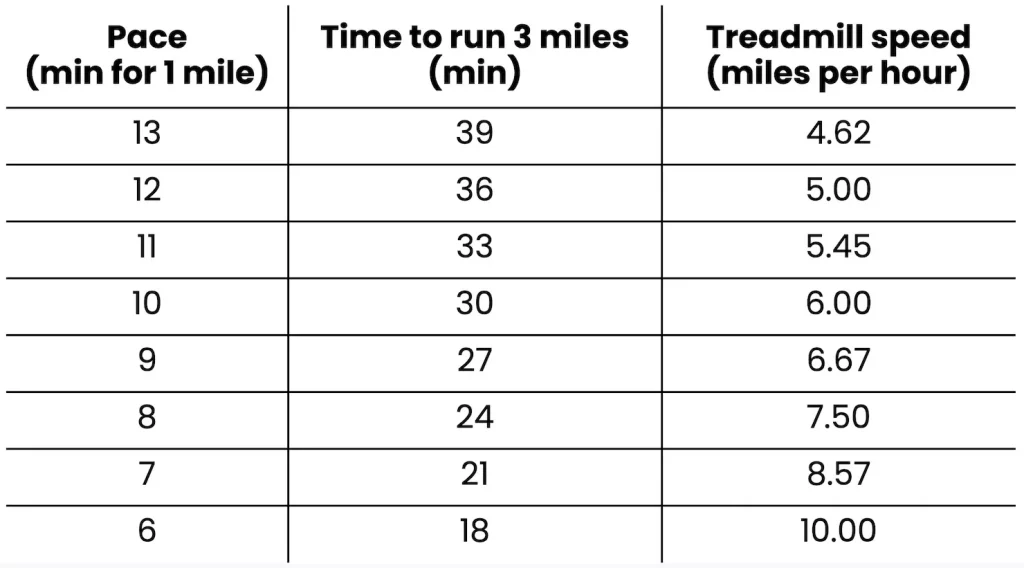Ever wondered how many steps in a mile when jogging? Though the answer may not be as obvious, several factors can influence how many steps you take when jogging a mile. It’s influenced by several factors including your stride length, speed, and even the terrain you’re running on.
In this post, we’ll delve into these variables to help you understand their impact on your step count during a jog. We will also discuss the average number of steps per mile while jogging and why it’s important to track your step count for optimal fitness management.
Furthermore, we’ll guide you through setting personalized daily step goals based on baseline data and achieving total daily steps close to 10K. Additionally, calculating stride length accurately is crucial for distance estimation – our methodology section has got that covered!
Finally, get ready to embrace technology! We will explore how incorporating fitness trackers can enhance your exercise routine by mapping out local area courses and providing real-time analysis for goal setting. So if you’re eager to learn more about how many steps in a mile when jogging – stay tuned!
Understanding the Steps in a Mile for Joggers
Let’s find out. Keep in mind that several factors can affect this number, such as your height, pace, terrain, and fitness level. On average, joggers take around 1,500 steps per mile.

Factors That Affect Step Count While Jogging
- Height: Taller people tend to have longer strides, which means they may cover more distance with fewer steps than shorter folks.
- Pace: The faster you run or jog, the more likely you are to take more steps within a given distance due to increased stride frequency.
- Terrain: Running uphill or on uneven ground can require more effort, leading to an increase in step count even over short distances.
- Fitness Level: Your physical condition also plays a role. Fitter individuals tend to have more efficient movement patterns, reducing unnecessary extra moves during exercise sessions and conserving energy while covering larger areas quickly.
For more information about these factors and their impact on step counts while jogging, check out resources like Mayo Clinic and Healthline.
Average Number of Steps Per Mile While Jogging
On average, people take between 1,400 and 1,600 steps per mile when jogging, depending on individual characteristics and running style. However, it’s important to personalize your workout routine based on your own needs for optimal results. Using fitness trackers like RunKeeper or Strava can help you monitor your progress and adjust your training plan accordingly. To maximize your results, ensure you have the right gear, necessary supplies, are aware of weather conditions, plan ahead and stay hydrated while using proper form to avoid injury and remain motivated. With practice, you can achieve your ultimate health and wellness goals.
Importance of Tracking Your Step Count
Keeping track of your step count is crucial for managing your exercise routine and maintaining general health. Studies have shown that those who use pedometers tend to engage in an additional 30 minutes of moderate-to-vigorous physical activity each week than those who do not.
Benefits of Using Pedometers for Exercise Management
Pedometers count the number of steps you take and are a great tool for tracking progress and setting fitness goals. By giving you real-time feedback on your activity levels, they encourage more movement throughout the day.
A study published in Journal Medicine & Science in Sports & Exercise found that participants who used pedometers increased their physical activity by approximately 2000 steps per day compared to those who did not use these devices. This increase equates to nearly one extra mile walked daily.
Increased Physical Activity Through Step Count Monitoring
Monitoring step counts is simple and provides an easy-to-understand metric that can motivate individuals towards achieving better health outcomes through increased physical activity.
- Motivation: Seeing the number of steps taken can provide a sense of accomplishment and inspire further action.
- Benchmarking: It allows comparison with recommended guidelines or personal targets set previously, encouraging improvement over time.
- Evaluation: It helps evaluate if current lifestyle habits align with overall health objectives or if adjustments need to be made accordingly.
An article from Harvard Health Publishing suggests walking 10k steps per day as a reasonable goal for most people aiming to improve their cardiovascular health while reducing risks associated with sedentary behavior such as obesity and diabetes. So start counting today.
Setting Personalized Daily Step Goals
Forget the ‘one-size-fits-all’ step count – personalization is key to fitness success. Your height, stride length, and physical condition all play a role in determining your ideal daily step count. So, let’s talk about how to set personalized daily step goals that work for you.
Determining Your Baseline Step-count
Before you can set achievable daily step goals, you need to know your baseline step count. This is the mean amount of steps you take without purposely trying to walk further than normal. Utilize a pedometer or mobile application to monitor your daily activity and obtain an exact baseline figure.
Knowing your baseline helps you set realistic goals and gradually increase your daily steps.
Achieving Total Daily Steps Close To 10K
Many people aim for around 10k steps per day, but don’t worry if that seems like a lot. Start small by adding an extra thousand steps each week until it becomes manageable. Remember, all forms of movement count towards your daily total – not just jogging. Mix it up with swimming or cycling for variety and fun.
- Pace yourself: Don’t push yourself too hard right off the bat, or you risk burnout. Listen to your body’s signals and allow for recovery periods between intense workouts to maintain overall health and wellbeing.
The key is consistency, not perfection. You don’t have to hit exactly 10k steps every day, but aim to move more often than before. With personalized daily step goals, you’ll be on your way to achieving your desired fitness level in no time.
For more information on the benefits of walking, check out this Mayo Clinic article.
Calculating Stride Length For Accurate Distance Estimation
To accurately track your jogging performance, it’s essential to have an understanding of stride length — the distance traversed with each step. Your stride length, or the distance covered with each step, can significantly impact how many steps you take in a mile. This information can be used to calculate future distances covered when specific targets are met.
Methodology For Calculating Stride Length
To determine your stride length accurately, try this simple method: Stand about twenty feet behind a goal post at a football field (or any other marked area). Walk normally until reaching the other end while counting all along before dividing by total foot count. Here’s an easy-to-follow process:
- Stand 20 feet away from a starting point.
- Walk towards that point at your usual pace.
- Count every step you take until you reach the endpoint.
- The number of steps taken is then divided by 20 (the total distance walked) to give an average stride length for walking.
This exercise should ideally be repeated several times on different days under various conditions like terrain and weather for more accurate results. Here’s a detailed guide on measuring your stride length using this method.
Utilizing Stride Length Data In Fitness Regime
Your calculated stride length isn’t just useful trivia; it plays an integral role in planning and monitoring your fitness regime effectively. By knowing how far each step takes you, it becomes easier to set achievable goals related to both time spent exercising and overall distance covered during workouts. You’ll also have better insight into calories burned since longer strides typically require more energy expenditure than shorter ones. This article delves deeper into how varying strides affect caloric expenditure during exercises.
Moreover, if weight loss or muscle gain is among your fitness objectives, incorporating these calculations could help tailor workout routines suited specifically for those needs based on individual metrics such as height and body mass index (BMI).
In essence, calculating one’s stride length provides valuable data necessary for designing effective training plans aimed at improving wellbeing through achieving personal health-related goals like losing weight or gaining muscle mass. So why not grab that tape measure now?
This section provides a methodology for calculating stride length while jogging, which is crucial for accurately estimating distance covered and setting fitness goals. By walking 20 feet and counting the number of steps taken, one can determine their average stride length. This information can be used to tailor workout routines based on individual metrics like height and BMI to achieve personal health-related goals such as weight loss or muscle gain.
Mapping Out Local Area Course With Fitness Tracker
In this digital age, utilizing tech to optimize your physical activity can significantly boost your fitness progress. One such tool is a fitness tracker that not only monitors your steps but also provides real-time data analysis results. When combined with personal metrics like height, this information can be used to calculate exact figures necessary to meet goals related to improving wellbeing, losing weight, or gaining muscle mass.
Incorporating Technology Into Exercise Routine
The use of technology in exercise routines has become increasingly popular due to its convenience and efficiency. A key benefit of using a fitness tracker is its ability to provide accurate step counts and distance covered during jogging sessions. This allows you to monitor progress and make adjustments as needed.
Fitness trackers come equipped with GPS functionality, which enables users to map out their local area course online before embarking on their jog. This feature proves particularly useful when exploring new routes or for those who prefer changing up their running scenery from time-to-time.
Real-Time Analysis And Goal Setting With Fitness Trackers
Apart from tracking physical activity, another advantage of using a fitness tracker lies in its capacity for real-time data analysis. By providing instant feedback on heart rate, calories burned, speed, and elevation gain among other things, it offers valuable insights into one’s performance levels throughout the workout session.
- Data Accuracy: The precision offered by these devices helps in setting realistic targets based on individual capabilities rather than generic benchmarks often suggested by health apps without personalized inputs.
- Motivation Booster: Seeing tangible proof of effort put forth during workouts serves as an excellent motivator encouraging consistency while striving towards achieving set goals.
- Vital Signs Monitoring: Some advanced models even offer features like sleep tracking or stress level monitoring which contribute towards overall wellness beyond just physical aspects.
To maximize benefits derived from these gadgets, it’s important they’re used correctly following manufacturer guidelines regarding placement, etcetera, ensuring optimal functioning, thereby yielding reliable results aiding effective goal-setting subsequently leading to improved health outcomes over time if consistently adhered to along with regular updates keeping pace with evolving user needs and preferences.
However sophisticated, tech aids are no substitute for hard work and dedication when it comes to maintaining a healthy lifestyle. So don’t rely solely on tech aids, rather consider them supplementary tools assisting the journey towards better well-being. Happy Jogging.
The article discusses the benefits of using a fitness tracker during jogging sessions. It highlights how technology can be incorporated into exercise routines to enhance one’s fitness journey, and how real-time data analysis provided by these devices helps in setting realistic targets based on individual capabilities. The precision offered by these gadgets serves as an excellent motivator encouraging consistency while striving towards achieving set goals, but it is important to remember that they should be used correctly and not relied upon solely for maintaining a healthy lifestyle.
FAQs in Relation to How Many Steps in a Mile When Jogging
How Many Steps in a Mile Jogging?
It takes around 2,000 to 2,500 steps to cover a mile while jogging, depending on your stride length. Learn more about step count here.
How Many Miles is 10,000 Steps Jogging?
If your stride length is around four feet, then running around ten thousand steps would equate roughly five miles. Calculate distance from step count here.
Does Jogging Count as Steps?
Yes, each footfall counts as one step whether you’re walking or running/jogging.
Conclusion
Joggers need to know the number of steps per mile to track their physical activity and set fitness goals, with a daily target of 10K steps to stay active.
Using fitness trackers and calculating stride length accurately can help joggers map out courses, analyze real-time data, and achieve personal milestones.







